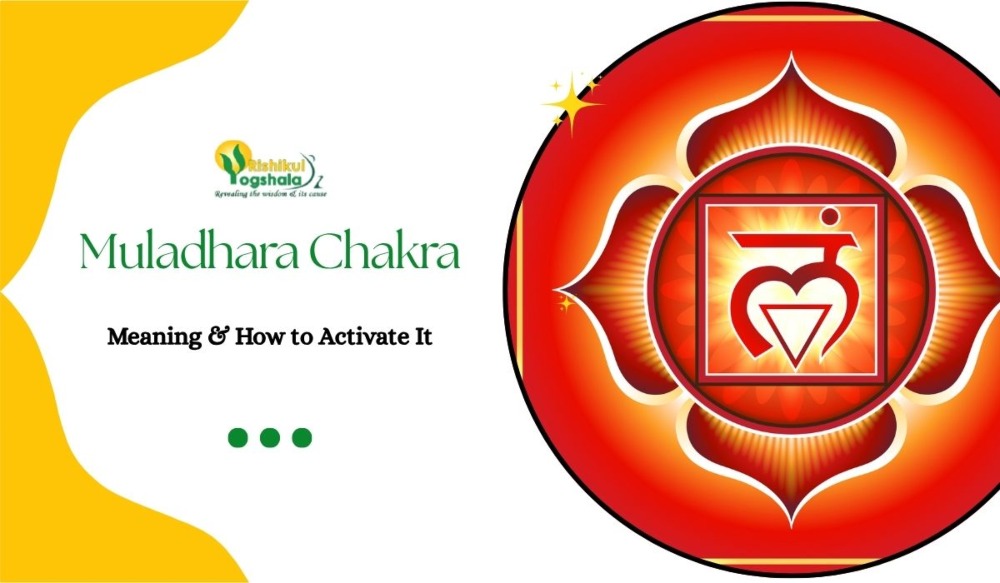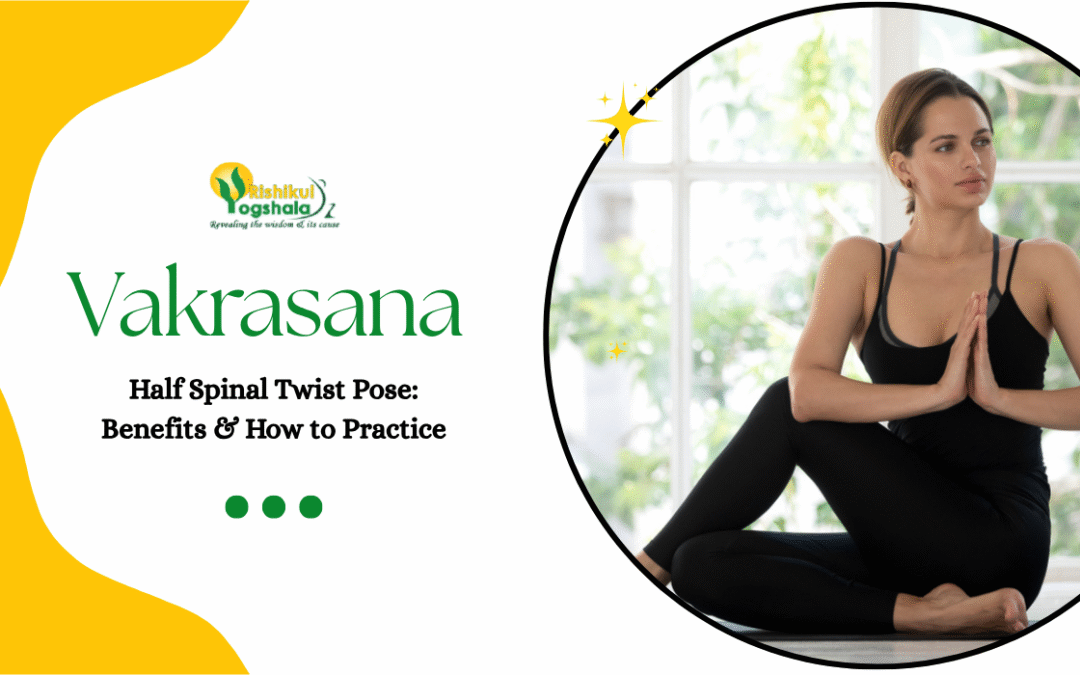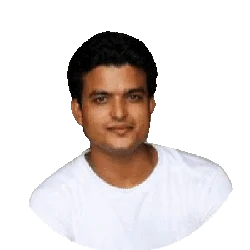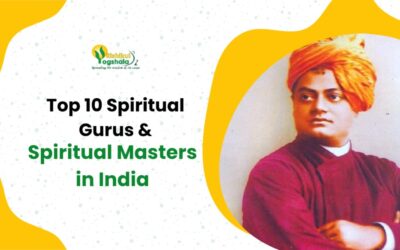The Power of Om, OM and its True Spiritual Purpose
This blog is dedicated to my fellow Yoga Teachers, students and spiritual seekers. The blog will present a concise historical overview of OM and its true spiritual purpose. The study and practice of the mantra OM is intended to strengthen practitioner’s self study who then in turn will be motivated to enthusiastically and enthusiastically to share their direct experience, true meaning and significance of OM with others on the path.

Another motivation for this blog is to reveal the truth for apprentice Yogis and Yoga instructors whose ignorance and lack of direct experience is trivializing and disrespecting our native culture simply for entertainment’s sake. This is a form of narcissism borne out of ego and material gains which takes advantage of an innocent audience who naively believe such people have true knowledge and experience.
Both the devotional images as well as the chanting of OM and the power of om are sacred and are consistent with the philosophical and lived tradition of daily life in India. It is relevant, the chanting of OM and The power of The power of om devotion to its visual representations has been practiced with great dedication for various reasons and subtle purposes by Yogis, monks, saints and householders alike in India and other Asian-sub-continents for a very long period of time.
Over the last century there has been a massive unfolding, even in the billions, of spiritual seekers in both the East and West. Many of these spiritual seekers now practice devotion to OM and The power of om in their daily rituals. Unfortunately the other side of the coin is that both the chanting of OM and the sacred symbol of The power of om itself has become a fashion trend to be seen as body tattoos, clothing decorations, Yoga mats etc. It has become common place to see and hear the sacred Om misinterpreted in many erroneous ways, hasn’t it?
Reference to OM is found in the Vedas, Upanishads and Yoga
OM’ and ‘Atha’
Reference to Om can be found in the unadulterated sacred scriptures of the Vedas. The chanting of Vedic-mantras was initiated with the auspicious sounds of ‘OM’ and ‘Atha’. The power of om are Both of these mantras from the basis of the Upanishads and Yoga.

The ‘Mandukya Upanishad’ is solely dedicated to the explanation of OM. It contains only 12 verses and attributes both spiritual and scientific significance of OM.
The ‘Prashno Upanishad’ explains the philosophy of OM and the power of om to a spiritual seeker and guides the seeker in the progress of his Sadhna. In so doing it makes very clear the necessary dedication and discipline required of the seeker to both worship with devotion and simultaneously realize material and spiritual rewards (Siddhis and Samadhis).
The Bhagwad Gita, known as ‘the complete guide for all’. Is one of the most important texts of Yoga. In this ancient scripture, Lord Krishna reveals various paths of Yoga. He also reveals his divine form to Arjuna (virat swaroopa) and uncovers that he the Lord himself, the immutable ‘Omkaar Akshara’ (Immutable) in to be found in all of the mantras.
In ‘Sad Darshana’ (the six streams of Indian philosophy), ‘Yoga Darshana’, is well known. In the first chapter of 27th, 28th and 29th aphorism Lord Patanjali also highlights The power of Om Sadhna (Bhakti Yoga) for advanced and well qualified Sadhaka.
Also Read: Learn the Breath Awareness Meditation Technique To Overcome Stress & Anxiety
The Way Om and Other Sacred Teachings Came To The West
The ancient ‘Vedic teachings were introduced in modern times at an ecumenical gathering of religious representatives from all over the world gathered publicly. This happened during 1893 in World’s Parliament of Religions in Chicago, America. Simultaneously skilled and well qualified multi lingual Indian monk Swami Vivekananda travelled many continents in the west and participated in such events to introduce the sacred Vedic teachings.
History verifies the Indian sub-continent has been attracting spiritual seekers and scholars well before this period of time. However, but after ‘1893 period highly intellectual and religious people from Europe and other parts of the Western world got hold of the concept:’ to think and contemplate’.
In so doing they were attracted to study and practice in India under the direct tutelage of Indian scholars and monks.
These people who travelled to India to study and practice were already skilled in the Vedic-Yoga teachings. In turn, they invited their followers and associates, to join them in India and experience the sacred teachings and tremendous practical approach towards Holistic Health of Indian philosophy.
This was a huge deviation from the theory of Hell and Heaven where there is no freedom to ask questions about doubts that may arise.
The Coalescence of Modern Science and Vedic-Yoga
Contemporary science and Vedic-Yoga began to unite around the 1920’s. It was around this time we started to see yogis and monks starting to demonstrate yogic principles in laboratories as opposed to the Himalayas and deep forest. Modern technologies were used to demonstrate and verify ancient lifestyle and Vedic-Yoga and the finding were both recorded and published publicly so as to promote the positive effect on the Physical and Mental body as well as to society, life style and spiritual practices

In today’s world, many people who practice Vedic-Yoga benefit greatly and with deep inspiration and gratitude honor the saints, monks, yogis and their disciples who sacrificed their lives so as to serve humanity. In so doing they remained compassionate towards all living beings and helped educated modern society about the draw back and dangers of jet set, stressful life style.
Both monks and yogis who did and didn’t travel abroad drew attention of the entire world towards the Vedic teachings
Some of these respected monks and yogis are:-
Swami Vivekananda ji, Swami Shivananda ji, Swami Prabhupada ji, Maharishi Mahesh Yogi ji, Rajneesh Osho ji, Sri Aurobindo ji, Sri Ramana Maharishi ji, Paramhamsa Yogananda ji, Himalayan Yogi Swami Rama ji, Swami Chinmayananda Saraswati ji, Swami Satyananda Saraswati ji, J.Krishnamurthy ji, T.Krishnamacharya ji, Swami Kuvalyananda ji, Yogacharya BKS Iyengar ji, KP Joise ji .
Most of the time Westerners and Europeans have had the false idea that India is a poor country, filled with illiterates who indulged in black magic and afraid of travel. However it is obvious today there is no nationality who doesn’t desire to come and study Vedic philosophy and yoga studies in the place of it’s origin – India. And believe me, once a person has visited India they wish to return again and again to continue their studies and immerse themselves in the richest and oldest culture in the world!
Also Read: Sukhasana (Easy Pose) – Steps, Breathing, Meditation
The Significance of Om in Indian teachings
I have been instructed by our respected Swami Devatmananda saraswati ji that Indian teachings and rituals must begin and end with invocations to the Gurus, Forefathers, Deities, and Fives Elements etc. Also before and after all chanting of mantras we must chant the name of ‘That’; the omnipresent, omnipotent and omniscient also know as God “Om”.
The sacred sound the power of om is the biggest discovery to date by our seers and its significance has been stressed in many ways so as to attain physical and mental health and as well as realizing the highest truth in an individual’s life.
The whole Indian philosophy and psychology are simply branches of the power of om which reveals the evolution of the universe as well as the cycles of birth, death and liberation.

The respected ‘Swami Abhishekananda ji, he says that the power of Om is most sacred sound and to understand the science and philosophy behind OM we must study intensely the Vedas for 12 years or more. The Vedas are a composition of one hundred thousand hymns that have been further divided into three sections: 80,000 for karma kanda (for actions and daily rituals), 16,000 Upasana kanda (for the sacred worshiping of Tantra, Mantra, and Yantra), and 4,000 Gyana kanda (Upanishads/Jyanana Yoga).
There are varying paths to study OM
- The 100, 000 hymns expressing OM. Whilst it is almost impossible to study and absorb this immense work of our seers for those who do this study may also attain the highest truth.
- The second option is the Gayatri mantra Sadhna. This is considered one of the higher practices. This mantra captures the complete essence of the Vedas. Thus those who do study the Gayatri and learn from a competent master can attain the Moksha (liberation).
- The third which is superior to Gayatri Sadhna is the Mahavakya (the great saying). It is known as ‘tattvam-asi and means ‘I AM THAT or THOU ART THAT.
- Realization of the self with Supreme Self is the ultimate goal of all spiritual teachings (Hatha, Raja, Bhakti, Karma, Laya, Kundalini and so on), and the Om icon describes the stages of realisation.
Our monks and yogis have been expressing the nature of Omkaar (universal principals) in various ways.
Over the period of generations they have refined their teaching methods. Under the guidance of “Parampara” (through the long living traditions) they have served people and introduced the practices of Gayatri Sadhna, Mahavakya of Upanishads as well as various branches of Yoga to promote health, peace, and harmony in the world.
Contemplation of Om
I have heard a saying “in countless, we realize only one”. India is a country where there are so many languages spoken, cohabitating with vast and varied cultures who all have the same objective which is described with different names and pronunciations but it’s all the same thing isn’t?
Om is known as Bija mantra (Bija means seed and is often either chants alone or as a companion to other mantras at the beginning or end or both.
In different expressions of Yoga there many Bija mantras and are often have chosen either to appeal to the individual’s chosen deity or according to specific Tantric and Vedic science.
The power of Om is also known as an ‘Akshara’ (immutable/immortal) word and its sound represents the four laws of the Universe, the cyclic law of countless creations. These four laws are:
- ‘Akaar’ which may be chanted as ‘AAA’ and represents the waking consciousness, the deity ‘Brahma’
- ‘Ukar’, the law of providences may be chanted as “OOO” and it represents the dreaming consciousness, the deity ‘Vishnu’
- ‘Makar’ may be chanted as “MMM” and it represents the sleeping consciousness, the deity ‘Shiva’
- ‘Shoonya or Turiya’ is the fourth state and is known as the ‘Super conscious’ it encapsulates the law of silence before and after the AUM.
According to Swami Shivananda of Rishikesh, Turiya refers to both ‘Atman’, the individual soul and ‘Brahman’ the infinite soul representing spiritual union. Even the deities, Brahma, Vishnu and Shiva (the trinity) meditate on sustain this universal union until the Moksha (Liberation from duality) is realized.
The whole universe vibrates to the Om sound and so is regarded by the ‘seers’ as an auspicious sound and the name of the supreme soul. The power of Om is also known as ‘Pranava’, Pra refers to Prakruti from which the Universe evolved. The Navam is an amazing boat. (Shivapurana 1.17. refers Pranava to the syllable “Om”, according to Shivapurana the syllable “Om” means ‘an amazing boat to cross the ocean of worldly rounds).
Therefore, those who meditates on and of the power of Om over a long period and under the instruction of a competent teacher, regardless whether they are a monk or a householder will have the ability to transcend the three states of awareness (free from all forms of polarity) and realize their own true nature known as Samadhi (deep state of meditation).
Dharna, Dhyan and Samadhi in Personal Sadhna
In India we have saying that ‘each drop of water is vital, to fill the pot’. Therefore every effort you put in to your practice is of benefit to helping you achieve your physical and spiritual goals.
Value of course is dependent on the aspirant’s efforts and having the right road map from their master and teachers.
The “Vijyana Bhairava” speaks about ‘mantra Sadhna siddhi’ (the perfection of mantra and transdental realms of absolute experience).
Mantra – ‘Mananat-trayate iti Mantra’ By the Manana (constant thinking) of which one is protected or is released from the round of births and deaths, is Mantra.
A mantra is so called because it is achieved by the mental process. The root ‘Mann’ is the word mantra comes from, the first syllable of the word, meaning ‘to think’, and ‘Tra’from ‘Trai’ meaning ‘to protect’ or ‘free’ from the bondage of phenomenal world (source:- Japa yoga by swami Shivananda).
Devata/Devis – the term Devata/Devis means (the Gods/deities, there are numerous kinds of male and female deities); i.e. Gurudevta (the master from whom we received spiritual guidance), Kuladevta/Devi (family deity’s to worship), Ishtadevta/Devi (the term is denoting a worshiper’s favorite deity) and so on.
Swami Shivananda says; an Ishta devta/devis Shiva, Krishna, Rama, Vishnu, Durga the goddess, Guru Nanak Sahib, Buddha, Jesus Christ, Mohammad, and so on (according to the advice of your Guru we should have mantra and faith for ‘Devta/Devi, for the spiritual progress).

Atman – (“A” means negative particle and “tma” means darkness, which menas “Atma is light/luminous”. The word Atman is also translated as “Soul”. The Katha Upanishad 1.2.23. Commentary by Swami Shivananda, the Atman can be attained only by him/her who is free from desire and who seeks to know it.
This Atman reveals its real true nature to him. The soul of him who is desirous of knowing his own soul reveals its own truth. A spiritual aspirant should know the method of inquiring the “Atman”. Therefore our seers used to recommend the ancient method to us, which is regarded as “Neti Neti”.
The Neti Neti is a Sanskrit expression which means “neither this, nor that”. It is the method of Upanishadic analysis of elimination. The purpose of the ancient practice is to reject, through continual and intensifies effort, everything that is not of Atman (self).
Manas – is a sanskrit term which means the “processing mind”, and controller of the five sensory organs. To contemplate on the self, the Yogis are entailed to goes into self-awareness training.
The self is like a still centre of a wheel, where the four spokes are the four functions of Manas = mind, chitta =memory house, Ahamkara = I maker/ego and Buddhi = discrimination, that operates the external wheel in the world outside. Observing the four function of mind is an important part of internal limbs of Yoga.
Prana – the word Prana is used and translated in two senses i.e.
Prana shakti (the life force), the studies of Prana, Apana, Samana, Udana and Vyana.
There various biological functions (the Yogic physiology of “Pranas” or the expansion and control of biological functions).

The Breath (the refinement of “Pratyahara” through “Pranayama/breathing exercise”).
The training of expansion (for neophyte) and then control (for advanced) of “Prana” are must for Yogis, and thus practicing mantras simultaneously gives faster progress to the internal limbs of Yoga.
Learn how to bring all the five constitutions on one ground, thereby to become one while chanting mantra and concentration.
The Chanting of Aum/Om
The chanting practice of the power of Om has two aspects”Japa and Ajapa” (a little loudly and mentally repetition). The mantra sadhna is evenly kept with other Yoga limbs, and I think superior to Yoga Asanas and Pranayama and thus which falls in ‘Antar-anga Yoga sadhna (advanced practices or internal limbs of Yoga).
1st Practice: –The Akshara chant and awareness A-U-M/OM (AAAAA-UUUUU-MMMMM)
- Sit in a “Sukhasana” (Easy posture) or Vajraasana (Thunderbolt posture) close your eyes and relax your body and mind.
- Now bring your awareness to your breathings, the breaths should be unhurried, effortless, soft, quite and pause less (sit quite for one minute).
- Now observe below the navel centre (Mooladhar and Swadhisthan) while breathing in and out. Then quietly Inhale effortlessly and chant only “AAAAAAAA” with prolong exhalation while observing the first two chakras and repeat three times.
- Therefore slowly bring your awareness to the chest and abdominal cavity and focus your mind between the space of second two chakras from the bottom (Manipura and Anhata) and chant “OOOOO” with prolong exhalation, and repeat same for three times.
- Then slowly move your awareness and observe the space between third two chakras neck and forehead (Vishuddhi and Anjana) and chant “MMMMM” with same prolong exhalation and observe the space, repeat this three times.
- Then observe the silence while inhalation and exhalation with effortlessness in breathing in and out.
Note: You can repeat this cycle for up to eleven rounds while giving rest between each round. If you want intensity then directly continue for eleven rounds and then bring your mind into your nostrils and sit quite for as long as comfortably you can.
When you think you need to release the posture, release it and then lying down in Shavasana for 10 minutes.

2nd practice:- The Om chanting into the spinal cord with breath awareness
- Sit in a Sukhasana or Vajrasana, completely relax your whole body and mind.
- Then bring your awareness to all your breath inside the nasal passages, and rest your mind inside the nostrils.
Let the mind settle down and focus to incoming and outgoing rhythms of breath. - Now prepare the mind to descend while inhaling from the nostrils to tip of the tailbone, then let the mind ascend while exhaling and chanting “OM” from tip of the tailbone to the cervical 1st vertebra column (to the brainstem).
- Then again Inhaling and let the mind descend from the Cervical 1st to tip of the tailbone, and then while exhaling chant OM, let the mind again ascend to the cervical 1st column.
- Repeat this cycle for 3/6/11/21/51 rounds (gradually increase the number of repetitions) and then bring your awareness back to the nostrils and rest the mind while observing silence for 10 minutes (surrender yourself to the “Om” in terms of silence), and then lying down in Shavasana for as long as you need.
Conclusion
If you’re looking to deepen your yoga practice or start your journey with a solid foundation, consider exploring Iyengar Yoga through a 200-hour Yoga Teacher Training in Rishikesh at Rishikul Yogshala. You can also explore the 300-hour Yoga Teacher Training in Rishikesh for a more advanced approach. For those looking for a comprehensive program, the 500-hour Yoga Teacher Training in Rishikesh offer a complete immersion into the world of yoga.
Note: The practice is given based on Japa (chanting loudly or mildly).












